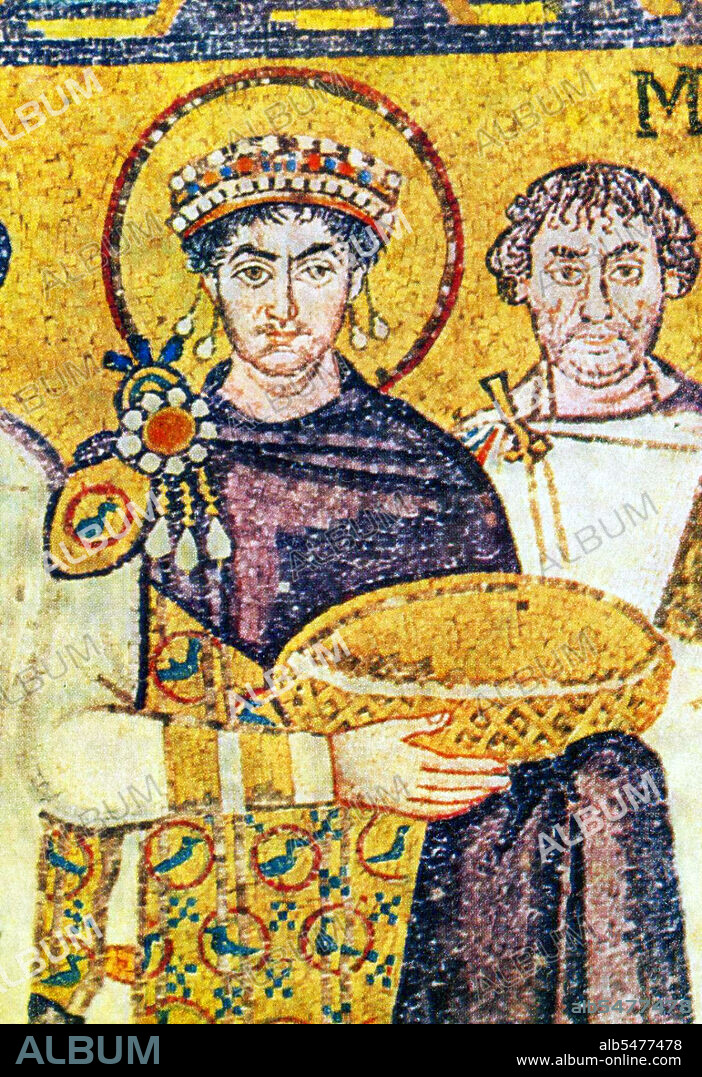alb5477478
The Byzantine Emperor Justinian I dressed in Tyrian Imperial Purple robes.

|
Añadir a otro lightbox |
|
Añadir a otro lightbox |



¿Ya tienes cuenta? Iniciar sesión
¿No tienes cuenta? Regístrate
Compra esta imagen

Título:
The Byzantine Emperor Justinian I dressed in Tyrian Imperial Purple robes.
Descripción:
Ver traducción automática
Justinian I (Latin: Flavius Petrus Sabbatius Iustinianus Augustus, c. 482 14 November 565), commonly known as Justinian the Great, was Byzantine Emperor from 527 to 565. During his reign, Justinian sought to revive the Empire's greatness and reconquer the lost western half of the classical Roman Empire. Tyrian purple, also known as royal purple, imperial purple or imperial dye, is a purple-red natural dye, which is a secretion produced by certain species of predatory sea snails in the family Muricidae, a type of rock snail by the name Murex. This dye was probably first used by the ancient Phoenicians. The dye was greatly prized in antiquity because the color did not easily fade, but instead became brighter with weathering and sunlight. Tyrian purple was expensive: the 4th-century-BC historian Theopompus reported, 'Purple for dyes fetched its weight in silver at Colophon' in Asia Minor. The expense meant that purple-dyed textiles became status symbols, and early sumptuary laws restricted their uses. The production of Tyrian purple was tightly controlled in Byzantium and was subsidized by the imperial court, which restricted its use for the colouring of imperial silks, so that a child born to a reigning emperor was styled 'porphyrogenitos' or 'born in the purple'.
Crédito:
Album / Pictures From History/Universal Images Group
Autorizaciones:
Modelo: No - Propiedad: No
¿Preguntas relacionadas con los derechos?
¿Preguntas relacionadas con los derechos?
Tamaño imagen:
3500 x 5109 px | 51.2 MB
Tamaño impresión:
29.6 x 43.3 cm | 11.7 x 17.0 in (300 dpi)
 Pinterest
Pinterest Twitter
Twitter Facebook
Facebook Copiar enlace
Copiar enlace Email
Email
